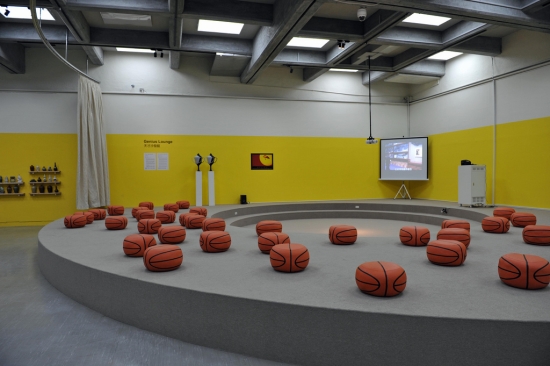Google has scrapped AHMM’s design for its flagship King’s Cross headquarters and asked the architects to come up with ‘more ambitious’ plans that will push the boundaries of office design. But is this pushing the boundaries too far?

The one million square foot building received planning permission from Camden Council in September and already includes provision for a host of ‘fun’ features including cycling ramps, a running track, a roof garden and a swimming pool. So what more is Google searching for and where do the boundaries between work and leisure lie?
Everyone is familiar with the Google office design ethos. Breakout spaces, slides between floors and climbing walls are essential to encourage, what the search engine giant likes to call, ‘serendipitous interaction.’ For those lucky enough to work for the company the prospect of serendipity is supposedly never further than a toss of a rubber ball away, while the rest of us can do little but look on in envy.
But are we envious? Do we really want to work in an environment like this and is it good for productivity? Not according to journalist Ellen E Jones. Writing in the Independent she questions the growth of ‘non-traditional working spaces’ pioneered by tech companies, and insists that all staff need is a desk and a pleasant, functional office.
It seems Jones is not alone in her disdain for the playground office principle, with even some ex-Google employees calling the ethos into question. One complains about the difficulty of actually getting any work done with all the distractions, while another recalls a staff disagreement over noisy massage chairs.
Jones argues that the problem with the ‘fun office’ is that it is a contradiction in terms and that work and leisure are defined in opposition to each other.
“Work is necessary to earn your leisure time. Leisure time is necessary to fuel your work. Allow one to bleed too much into the other and the quality of both is compromised.
“Then, before you know it, you’re no longer an innovative firm on the cutting edge of creative thinking; you’re just three berks in an unheated warehouse arguing over whose turn it is on the space hopper,” she says.
AHMM has, as yet, made no comment on Google’s verdict on the plans that took two years to draw up. What changes will be made remains to be seen, but it is believed the building will now be completed in 2017 instead of the scheduled date of 2016.
Previous Post
New Anchor Announced for Canterbury Shopping Centre